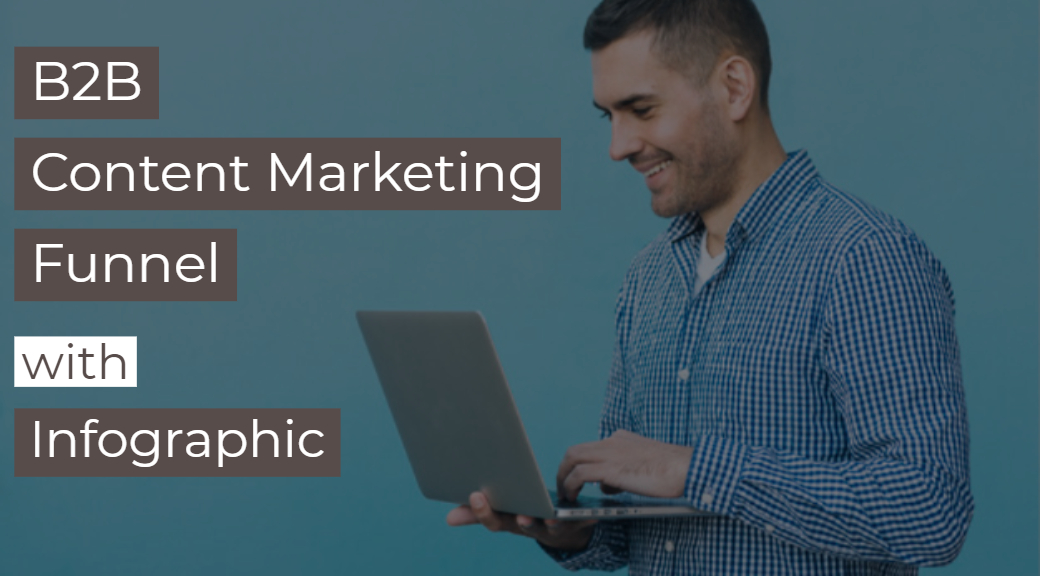According to Demand Metric, content marketing generates three times more leads than outbound marketing and it’s about 62% less costly.
If you want to attract more leads and spend less to do so, you can leverage content marketing.
That said, using a B2B content marketing funnel without doing it the right way is a recipe for failure.
In this guide, you’ll learn how to create a B2B content marketing funnel that works and how to optimize an existing one.
Have you checked our previous infographic about B2B Content Marketing Trends and Statistics? Not yet then you need to read.

Contents
How to Create a B2B Content Marketing Funnel: The Basics
Before creating a B2B content marketing funnel, you must understand what stage your audience is in.
This helps you create content that is suitable for them at the point they’re at.
There are three stages that an audience typically passes through in a B2B content marketing funnel.
These include:
- Awareness stage
- Evaluation stage
- Purchase stage
Let’s find out what each stage entails and what type of content you should create.
Awareness Stage
This is the first stage in your B2B content marketing funnel.
At this stage, your focus should be to create content about relevant topics in your industry, hence educating and attracting your target audience.
Your content should give insights into industry updates and trends. It should provide solutions to a specific pain point, and explain the features of your products/services.
Blog posts, infographics, videos, social media posts, and whitepapers are the best ways to deliver content at this stage.
Evaluation Stage
Your focus at this stage should be to create content that will make your audience trust and want to identify with you.
Hence you need to work toward helping them learn about your business and the products/services you offer.
Your content should help your audience evaluate the best solutions to their specific problems. It should establish how your product will benefit them and explain the pros and cons of similar products out there.
The best content formats to use at this stage include case studies, guides, webinars, retargeting ads, templates, podcasts, emails, checklists, whitepapers, and videos. Now, thanks to webinar software benefits for B2B content marketing funnel marketers. You can have your own live event with the click of a button. No more juggling schedules or trying figure out when everyone is available in order to bring people together-webinars are easy as pie.
Purchase Stage
This is the final stage in a B2B content marketing funnel.
Your goal at this stage is to convince your prospects that the best decision they can make is to make a purchase.
Your content here should make your audience understand that buying from you and not someone else is the best thing to do.
Likewise, you must also prove that your product/service is exactly what they need at the moment and show them how other customers are benefiting from their purchase.
Content formats such as trials, demos, professional consultations, case studies, reviews/testimonials, and events/tradeshows work really well at this stage.
Best Practices to Optimize Your B2B Content Marketing Funnel
If you have an existing funnel, here are some ways to optimize it for better performance.
1. Create Content for Your Audience, Not for Yourself
If you want your B2B content marketing funnel to succeed, you should create content that’s valuable and useful to your audience.
According to a Content Marketing Institute survey, 90% of the most successful B2B content marketers put their audience’s informational needs first.
This is because people value those who genuinely want to help them.
2. Design a Funnel for Each Persona
The CMI study also found that 77% of the most successful B2B content marketers use personas in their funnels, and you should do the same.
When you create buyer personas, you can identify the unique pain points and informational needs of each persona. This will help you develop valuable content to address each persona’s needs.
3. Evaluate Funnel Performance
Creating a funnel without tracking how effective it is will get you nowhere.
When you track your funnel performance, you can identify areas where your prospects are facing difficulties and fix them.
You can use UTM parameters to see which types of content and channels are most effective. Social media analytics and page analytics can also be of great help when tracking conversions.
To learn more about B2B content marketing funnels, check out this UTM.io infographic.

Related Post:
